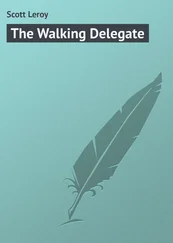I called, “Hey, when you have a minute, come up here.”
Sue emerged with a smile.
I said, “Sit down and listen.” In a few words, I described what was happening and what I suspected, then waited for her assessment, which was generally far better than mine.
She turned to stare at the other boat as if that would help her decide on a response. Then she studied the GPS. Finally, she said, “Besides what you’ve already found out, we have only a few choices. Go past the end of the land on our left and turn that way and run for the Pacific. Head for the ocean or continue sailing north are the obvious choices. We could turn around, but that seems silly. The last option is to turn and sail right at them and when we get there, ask them what the hell is going on.”
“At them?” I blurted. “We’re trying to get away from them.”
“I know that is what your gut says. But think about this. If we turn to the ocean, they’re better sailors and probably their boat is faster, so they’ll catch up with us if that is their intent. Same thing if we sail north or south. But if we turn right at them, what happens?”
“They attack and kill us sooner?”
She shrugged. “Sometimes you can’t control it all, but what happens if you confront a bully?”
“He punches you in the nose or worse.”
She smirked. “Sometimes. At others, the bully wonders if you know karate, or if you wrestle on the school team. He looks at your hands to see if you have a knife. If you don’t back down, he will. Not always, but sometimes. If he charges, you try to defend yourself, but he was going to beat the crap out of you anyhow, so now it is more on your terms.”
“Have you ever done that?” I asked, not really buying into what she was saying.
“Yes. There was this girl. Bigger than me but she thought I was after her ugly boyfriend. I heard she was telling everyone she was going to jump me on the way home. I knew she could beat me, and we heard she had a knife.”
“What’d you do?”
“I saw her in the hallway between classes. She was walking behind two coaches and another teacher. First, I slipped up behind her and put a knife into the pocket of her backpack. Then I jumped on her back and got her in a chokehold while I screamed and yelled that she had a knife. The teachers broke us up and took us both to the principal’s office.”
“What happened?”
“She got suspended when they found the knife. She said it wasn’t hers, but who’d believe that? She got warned that any fights with me in the future would get her put in juvie for the rest of the school year.”
Sue had made good points in our situation. After a wry look at her, I turned the Truant directly at the other boat. Actually, with my new seamanship skills, I aimed at a point well ahead of the white boat, a place where our paths would come together. “Get your shotgun and my rifle. Bring me my pistol, too.”
The distance closed between us for ten minutes. I counted the shells left in the rifle, double-checked the pistol, and waited. My breath came faster. We were going to meet the bully but had nobody to call for help. Still, we were not defenseless.
As we sailed closer, I made another determination to try and find better weapons and more ammunition. The binoculars revealed the outline of the sailboat better as we approached, one larger than ours by at least ten feet. It had two masts.
I found two people on deck, and perhaps a third who had quickly ducked out of sight. That furtive action didn’t sit well. Sue appeared from below with a baseball cap in her hand. She had a shirt that had been tied into a ball with stuffing. She placed it near the railing, put the cap on it, facing outward as if it was a person.
She placed three more in the next few minutes. To anyone on the other boat, it would look like there were six of us, with four hiding. She moved them a few feet now and then, and she sat up near the roof in clear sight, her shotgun always visible.
I started the engine. If nothing else, it pushed the boat faster and if we needed to escape, it might help. I gently increased the throttle until the engine roared and the boat raced ahead at twice the speed we had been going, which was eight or nine miles an hour.
That was one thing I was learning. On the water, in a sailboat, things tend to take a while to happen. You turn the wheel and the boat takes time to respond. The wind pushes the boat, but not always as fast as the tide. It’s like slow motion.
It gives you plenty of time to correct mistakes. That was what I was thinking as we sailed directly on course to intercept the other boat. Maybe we were making a mistake.
The mail sail on the other boat appeared as if by magic. It filled with wind, the boat turned and fled to the south as it leaned over at almost forty-five degrees. It used the wind to maximum advantage. A half-hour later we couldn’t see it.
But it might have radar and still keep track of us and attack when we were not prepared. We were not safe, not yet. Maybe never again. I shut down the engine and turned north again, still worried.
“Take the wheel?” I asked.
“What do I do?”
“Just keep us pointed that way and call me if you see anything or have a question.” I headed down to the desk and the stack of manuals in the rack.
I took the entire pile and started sorting through them, everything from automatic bilge pumps and HAM radio operations, jib furler, anchor windlass, and toilet operation and pump-out procedures. I put that one aside. We’d need to pump out the septic tanks sooner or later and needed to know how. There was a manual with red bold printing at the top that said, radar.
The image on the cover was a picture of a round hub I’d noticed high on the mast. A short while later, a small flat screen at the desk displayed images, colors, and symbols. I didn’t know what any of it meant, so with the manual open, I studied.
I gathered it could share the screen with the GPS outside, but I didn’t feel confident in losing it if something went wrong. I looked at the coastline ahead. There was a row of blips in front of us. The blips were boats, the manual said.
That meant a string of boats was lined up from Fort Ebby south, a natural choke-point where the route was the narrowest. The sailboat had been spying on us, and as long as we sailed directly at the line of boats ahead, it stayed clear of us—but it was probably in communication with the other boats the entire time. The boats ahead knew when we were arriving and where.
There were not enough boats to blockade the entire opening. Across from Fort Ebby was the state park of Fort Warden, both built because ships in wartime had to pass by them to reach Seattle. If the blockade ahead had been set five miles further south, we would have sailed right into them. If there were more boats, the blockade would have been completed. The radar revealed a possible way to sail past, especially in the dark.
In daylight, they would still see our sail as we slipped past them near Fort Warden or follow us on their radar. That gave me pause, and I changed that to maybe. Maybe they would see us. The jib was like a big white sheet on a blue sea. Lowering it meant it would be harder to see us. Only a mast six or eight inches around would be there, and we had the engine.
Going past was possible. However, a blockade of any sort needed to be avoided. That was our bottom line. My bottom line.
I turned south and let the tide carry us in the direction we’d come for, as I furled most of the jib to hide us better and waited for dark. Not just dark, but early morning. People stay awake, some of them, until well after dark. The ideal time to attack was three A.M. because nearly everyone is asleep and the watches that came on at midnight are dead tired. That tidbit also came from an army movie and had been my plan when stealing the boat. It had worked out well at that time.
Читать дальше












